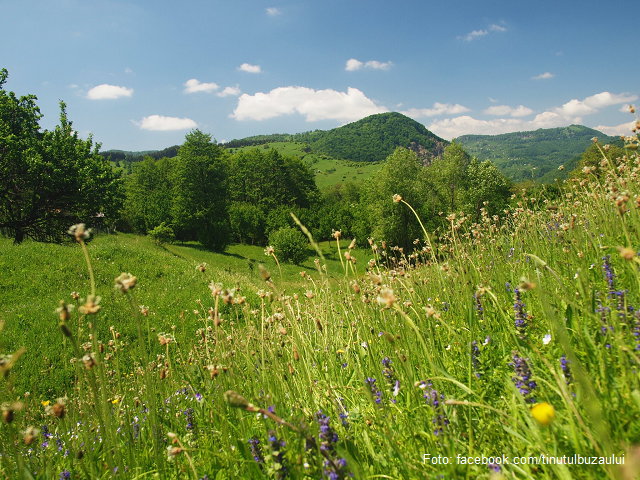The Buzău Land in south-eastern Romania has officially received the title of UNESCO Global Geopark, being recognized as a territory with natural and cultural values of global importance. It thus becomes the second geopark in Romania included in the Global Geoparks Network (GGN), after Țara Haţegului – Hațeg Land (west). The rural region of the submontane area of Buzău County, included in this geopark, stretches over an area of over one thousand square kilometers and has a population of over 40,000 inhabitants. The muddy volcanoes, the salt domes, the living fires, the trovants or stone formations from Ulmet, the cave settlements and the amber from Colți are among the most famous attractions of this region. The UNESCO Global Geopark status certifies the respective territory as an area where considerable efforts are made for the educational, economic and socio-cultural development of communities, in agreement with the protection and development of the environment.
Here is Răzvan-Gabriel Popa, the manager of the geopark, with details: The geopark is not a protected area, it is very important to mention that. The geopark itself is an area of sustainable development, which means that we do not come up with restrictions even on the environmental side. We, when protecting something in the geopark, we are protecting specifically the objectives that are of interest. Instead, what we’re doing, and what we’re going to do even more now, is working on mentalities. We work together with people so that they understand, practically and with results, why we need to protect the environment: because by protecting it, we are actually using it. And I can give a very clear example: lets say, we have somewhere a stone with very beautiful fossils. Anyone could come with a hammer and break it and sell the pieces of the fossils, until there is nothing left. Or we can protect that stone, tell its story, the story of the locals about it, the story of the Earth formation which is related to the formation of that stone and we can have a tourist circuit there and locals who can be storytellers and guides and guesthouses in the area and so on… We are trying to integrate the natural heritage and the environment into this economic and social educational circuit. It’s another way to revitalize communities. We expect that now these things will happen much more on a different level, because in addition to the efforts we are making together with the authorities and our partners there is this UNESCO status and this responsibility that I think will make us all look at things differently.
Buzău Land will also benefit from the UNESCO promotion through the European and Global Geoparks Network, and the new status will attract tourists and will have the potential to convince entrepreneurs to invest in alternative tourism, agritourism, cultural or adventure tourism. Also, this status will entail financing and investment in many other fields of activity, being an opportunity for economic and social revival of this territory.
What’s next? Here is with details Răzvan-Gabriel Popa, the manager of the geopark and also the director of the Buzău Land Association: On short and medium term, the Buzău Land Association will continue the process of developing and managing the area together with partners, with the County Council, with the mayors offices and with the University of Bucharest. We are planning several concrete actions. This very year, for example, we will make at least one plastic recycling station. The plan is to have five recycling stations across the region. People will collect their own plastic, take it to the local recycling point, where it will be chopped, melted and returned in the form of various objects: combs, pots, buckets, laundry hooks. Basically, we’re turning plastic from a waste into a circular local resource. We plan to do a lot more biking and hiking trails. We started doing these trails as of last year. These trails in the middle of nature take visitors to observation points from where they can watch animals. In Buzău Land we have the wildest areas in Romania, we have a very rich flora and fauna. The hiking routes will also take visitors to natural and cultural points of interest. And we are continuing the process of designating and protecting important areas. We designate, together with the mayors offices, protected areas of local interest. Last year, for instance, we designated the Boilers from Beciu, which are one of the most beautiful sites with muddy volcanoes and the least known perhaps. We practically protect these areas, we initiate small rehabilitation works and reintegrate them into the tourist, economic and educational circuit. We’re going to continue to do these things, we’re also continuing educational projects with schools, with children, we’re doing natural science labs. This year we will make the fourth one, most likely. There are many interesting things to do.
The UNESCO geoparks list includes 177 territories from 46 countries, whose sites and landscapes of global value are managed through an integrated approach, which includes the tourist development, education and conservation of the natural and cultural heritage. (LS)

